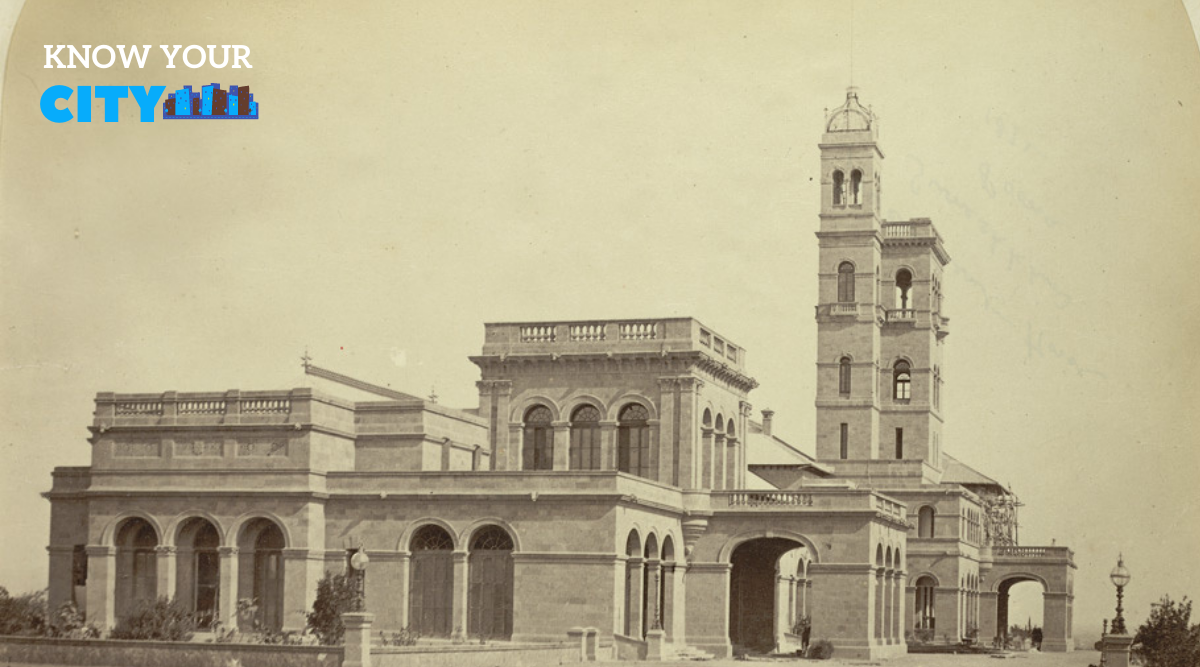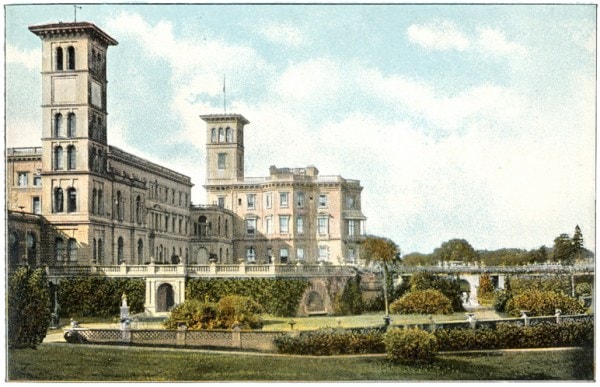 By the time it was completed in 1871, the cost of the residence was 1.75 lakh pounds, nearly six times the amount raised by the sale of the governor’s previous residence.
By the time it was completed in 1871, the cost of the residence was 1.75 lakh pounds, nearly six times the amount raised by the sale of the governor’s previous residence.The year was 1875 and the pound sterling had crashed when the then monsoon residence of the Governor of Bombay Presidency, now the main building of Savitribai Phule Pune University (SPPU), became the subject of newspaper headlines in the United Kingdom and the centre of heated debates in the British Parliament.
Built as the monsoon residence of the Governor of the British Presidency, Sir Bartle Frere who held the position from 1862 to 1867 had started the construction in 1864. However, by the time it was completed in 1871, the cost of the residence was 1.75 lakh pounds, nearly six times the amount raised by the sale of the governor’s previous residence.
The building of such a palatial house in the aftermath of the cotton crash in Bombay was severely criticized and referred to by the British Parliament as “a typical instance of the extravagance and insubordination of the governors of Bombay”.
Sir Frere defended his action staunchly. He, however, did not have an opportunity to stay in the house as the work was finished only after he left India. His successor, Sir William Vesey FitzGerald carried out the furnishing and decoration, and he in turn was criticized for being extravagant, especially for the 500 sterling pound chandeliers in the ballroom, which still hang in the main building.
Best of Express Premium
‘The Spectator’ in London described Frere in particularly uncharitable terms, calling him “one of the worst persons to be appointed”. He was later sent to punishment postings in faraway lands as a result of this insubordination.
On this sprawling premise, University of Poona (now SPPU) was established in 1949 with the Government House serving as the main building of the university, housing the office of the vice-chancellor, meeting rooms and administrative offices. The grounds adjoining the residence were transformed into an extensive European-style park.
Rahul Magar, an assistant professor at the history department of SPPU, who teaches the elective subject ‘History of Pune city’ at the department explains the history behind the background of the construction of the main building.
“The 1857 mutiny had a great effect on the British administration setup and until 1862, there was discussion to shift the provincial capital to Pune but it did not happen. However, what they did was they started new constructions in and around Pune. In an earlier war with the Peshwas, the old British Residency built at the Sangam or confluence of the Mula-Mutha river on the east bank was burnt down,” Magar said.
 Osborne House, United Kingdom. James Trubshawe who designed the Government House was said to have been inspired by the design of this former residence of the British royalty.
Osborne House, United Kingdom. James Trubshawe who designed the Government House was said to have been inspired by the design of this former residence of the British royalty. “The new governor’s residence was initially planned at a smaller cluster of land in Dapodi where a collection of old bungalows that earlier served as the residence of a British soldier in the Madras Army, Major Bank, stood. But this location was considered too far and then the land at Ganeshkhind was bought. The site had symbolic importance for the British. The Battle of Kirkee was fought at this site in 1818 following which the British took control of Pune,” he added.
In 1864, when construction began, the aftermath of the 1857 mutiny was fresh. The Indian princely states had assumed the British would sooner or later leave India and hence the latter started to establish huge monuments to show that they will stay for a long time, added Magar.
Architecturally, the construction of the main building, defies classification though its spiritual antecedents are Italian and the 80-feet flag tower has been described as a “Victorian rendering of an Italian campanile”. The building designed by architect James Trubshawe, also the architect of several other important buildings such as College of Engineering, the District Court Complex, the General Post office, was inspired by Prince Albert’s Osborne House on the Isle of Wight.
While Magar states that stylistically, the main building can be described as an eclectic mixture of Indo-Saracenic, Italianate, and Romanesque elements, in his preface to the report ‘Conservation of the Main Building, University of Pune’, conservationist and architect Kiran Kalamdani states that the confusion and lack of direction prevalent during the period is evident in the work of the Government House in Pune.
“The house was divided into two parts; the southern part comprised all the public rooms, including a ballroom which is 80 x 30 feet and where the much talked about chandelier made of Belgium-cut glass still hangs. This room rises to nearly the height of the whole building. There was a formal dining room adjoining it and between these two rooms, was a flower gallery, where guests could walk. The northern wing had the private rooms of the governor and about nine guest rooms. On the western frontage, a formal terraced garden was created and deep arcaded verandahs opened onto this space,” said Magar.
Besides the main residence, long single-storeyed outhouses were built for the governor’s staff which were designed in barrack style.
The Government House was the centre of British social life during the monsoons. “While Mahabaleshwar was the summer residence of the governor, Pune was the monsoon residence. During the monsoon, the governor would arrive with his administration entourage and live here. There used to be a lot of parties and entertaining guests,” said Magar. “A 300m-long tunnel was constructed under the main building connecting it to the kitchen complex. The purpose was practical, to carry food from the kitchens to the dining hall quickly, without being obstructed by rains. But the same tunnel also lays bare the class divide prevalent then. They wanted labourers to work but not be seen. The tunnel helped in segregation.”
While most of its history is known, several mysteries are yet to be unravelled and pose challenges before the historians, like an old photograph found recently which shows the presence of a half wall in the lower section of the main building. This wall is now a full wall indicating that the height of the half wall was increased later.
“We don’t know who or why this wall was worked upon. In 1897, Poona Plague Commissioner Charles Rand was shot dead on Ganeshkhind Road by the Chapekar brothers when he was returning from the Diamond Jubilee celebration of the coronation of the Queen held at Government House. We believe that the wall was covered up after that for security but we are still looking for the evidence,” said Magar.
- The Indian Express website has been rated GREEN for its credibility and trustworthiness by Newsguard, a global service that rates news sources for their journalistic standards.

